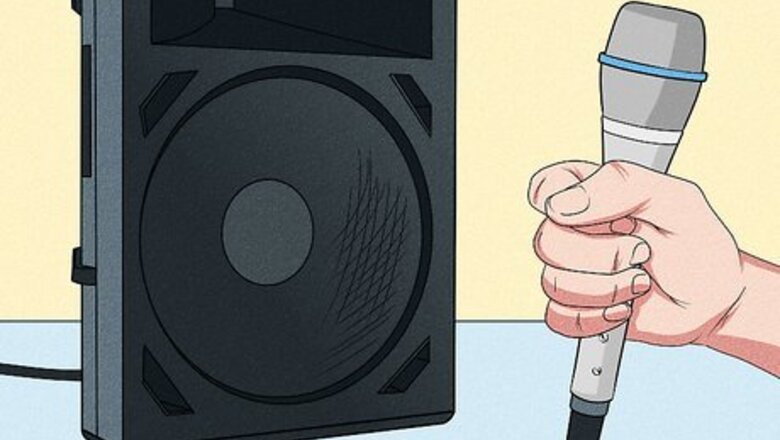
views
- Aim the microphone away from speakers or monitors, use in-ear monitors, & place the speakers in front of the microphone.
- You can adjust your equalizer so the frequencies aren’t as prominent.
- Reduce microphone gain settings and turn off or mute all microphones that are not being used.
Reducing Audio Interference
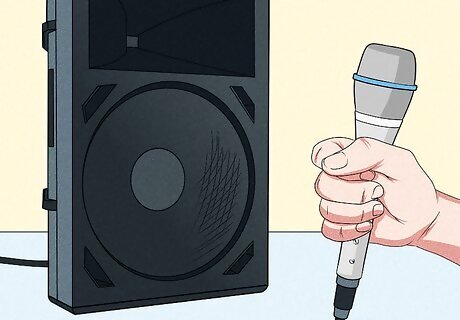
Point the microphone away from any speakers it’s connected to. Avoid holding the microphone directly in front of a speaker or monitor since it will immediately start to pick up the frequencies and cause feedback. When setting up a sound system, keep the output speakers in front of the microphone so it doesn’t capture audio. If you’re holding the microphone, be careful not to bring it past the speakers, or it may feed back. Try using a directional or cardioid microphone because they only pick up sounds from what they’re pointed at. Avoid using an omnidirectional microphone if possible since it captures audio from every angle and is prone to feedback. If it's not possible to place the speakers in front of the microphone, try increasing the distance between the microphone and the speakers.

Stay as close to the microphone as you can. If you keep the audio source far away, more interference can enter the microphone. If you’re singing or speaking, hold the microphone directly in front of your mouth so it only picks up your voice instead of the noise around it. If you’re hooking a microphone up to an amp or instrument, place it as close as possible so it doesn’t get a lot of feedback from other sources. Opt for direct input for instruments if you can so you don’t need to hook them up to a microphone first.Warning: Avoid cupping your hand around the microphone since it can increase the chances of feedback occurring.

Wear headphones or in-ear monitors to reduce feedback through speakers. If you have vocals running through a stage monitor or speaker, you may pick them up with your microphone. If you’re performing or speaking, ask the sound technician if they have in-ear monitors, which will play the audio from your microphone directly in your ears so you can hear yourself. If you’re recording vocals, listen to the track using headphones so the audio doesn’t get picked up by the microphone. Many recording microphones have a port that you can plug headphones into directly so you can also hear your own audio.
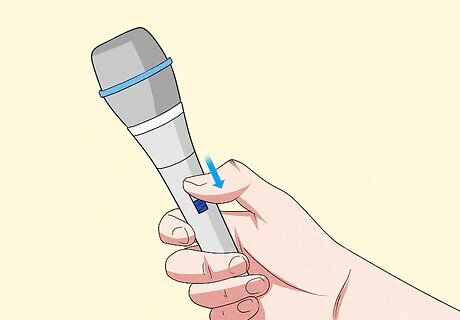
Turn off or mute the microphone when you aren’t using it. If you’re using the microphone, locate the power switch or button when you’re finished using it and turn it to the Off position so it doesn’t pick up any other audio. If you’re controlling audio or recording multiple microphones at the same time, mute the ones that aren’t being used on your mixer or computer. When someone wants to use them again, turn the microphones back on again. If there isn’t a switch or button on the microphone, you may need to unplug the attached cable instead.

Reduce the number of hard surfaces in the room so sound doesn’t bounce. Audio reflects and echoes off flat surfaces, which can re-enter the microphone and create feedback. Start by removing tables and other hard surfaces from the room where you’re using the microphone. Then, try to cover as many surfaces as possible with softer materials, such as carpeting, blankets, or thick tablecloths. Hang acoustic foam around the room to make irregularly-shaped surfaces that don’t produce an echo. Avoid pointing speakers at walls, ceilings, or windows since they make sounds bounce even more. Instead, point the speakers toward people or a crowd.
Changing the Mixer Settings
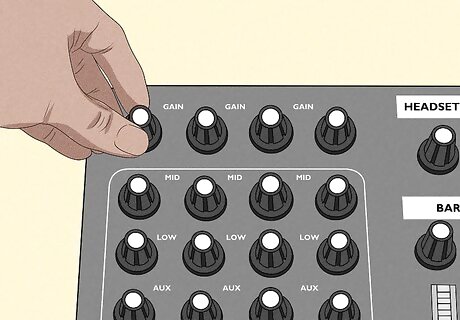
Reduce the microphone’s gain setting so it doesn’t pick up noises easily. The gain determines the microphone’s sensitivity to sound and how loudly it picks up noise. Turn the gain on the microphone up until you can just barely hear feedback coming from it. Lower the amount of gain by 5–10 decibels (dB) so it’s less likely to produce feedback while using the microphone. You can find the gain control on either the audio mixer or the digital audio workstation you use. Some microphones also have a gain control knob to adjust the microphone before it goes into a sound system.
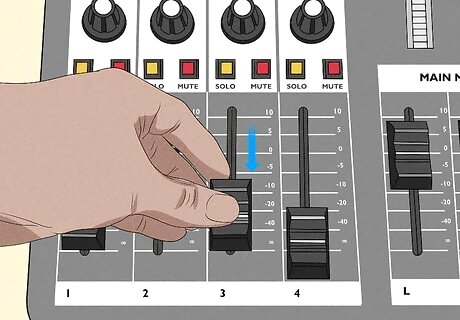
Lower the volume of the speakers so they’re less likely to cause interference. Speakers that are too loud can cause more audio to bounce around the room and enter the microphone. If you hear feedback from the microphone, reduce the volume on each speaker it’s connected to by about 5 dB at a time to make small adjustments. Test the microphone and listen for feedback again, turning down the volume more if needed. Be careful not to turn the speakers down too much, or else you may not be able to hear the audio. Only turning down the speakers may not completely reduce feedback. You may need to use additional methods to eliminate it completely.
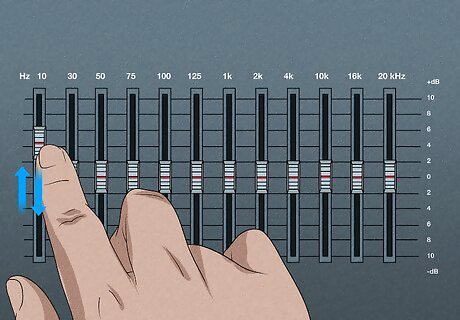
Turn down the EQ frequencies by 5 dB at a time to find what causes feedback. Set the frequency dials or faders on your equalizer so they’re at 0 dB. Increase the leftmost frequency by 5 dB and test using your microphone to see if you hear feedback. Set the frequency back to 0 dB before you test the next one. Continue testing down the line of frequencies and note which ones produce the most feedback. Reduce the volume of the frequencies causing you problems so the feedback doesn’t sound as prominent. As you get used to how the feedback sounds, you may be able to detect which frequencies are causing problems by ear.Common Frequencies for Feedback: Hooting and howling sounds usually occur within the 250–500 Hz frequencies. Whistling or screeching noises happen above 2 kHz frequencies.
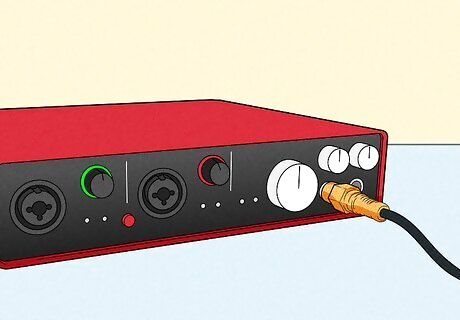
Use an automatic feedback eliminator if the microphone isn’t in a set position. Automatic feedback eliminators are items you can connect to the microphone line that sense when there’s interference. Connect the line for the microphone to one of the inputs on the eliminator using the regular cord. Then, run an XLR cord from the output of the feedback eliminator to the equalizer so it’s completely connected. If the eliminator detects feedback, it will turn down the frequencies immediately. You can buy automatic feedback eliminators from audio supply stores or online. Automatic feedback eliminators work best for live performances or presentations.
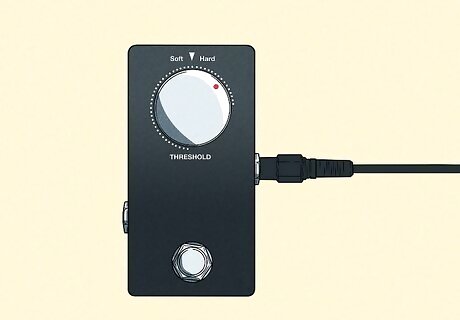
Apply a noise gate to the microphone. A noise gate allows you to set a threshold that limits which decibel range the microphone picks up and silences anything below the threshold. You can connect a noise gate to a microphone or use a noise gate plug-in in a DAW. Set the lower limit to about 10–15 dB below the input’s volume. Test playing the audio to see if the filter eliminates the ambient feedback. If it doesn’t, try raising the filter up by 2–3 dB at a time. Avoid setting the filter too high since it may cut off whatever you’ve recorded.


















Comments
0 comment